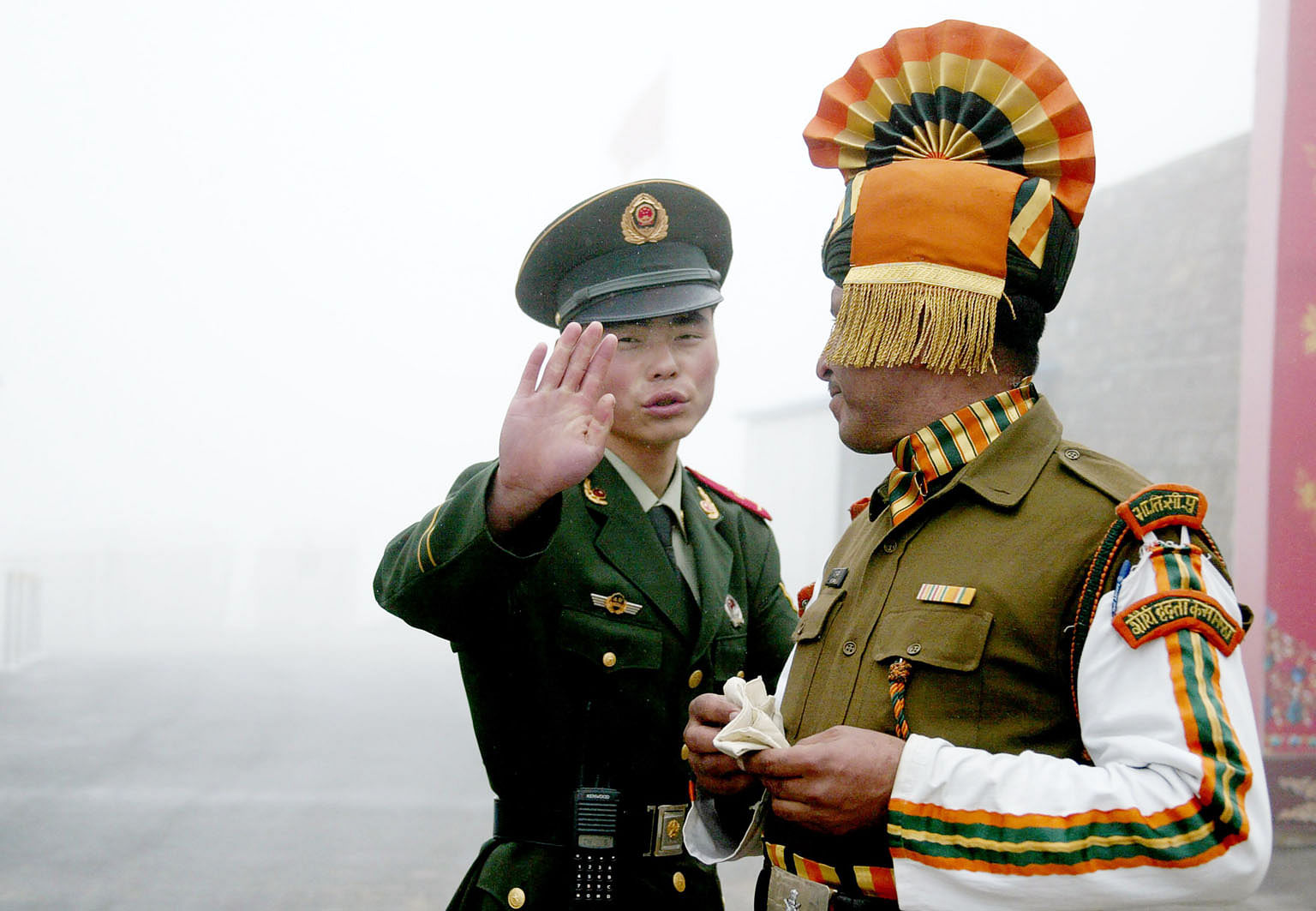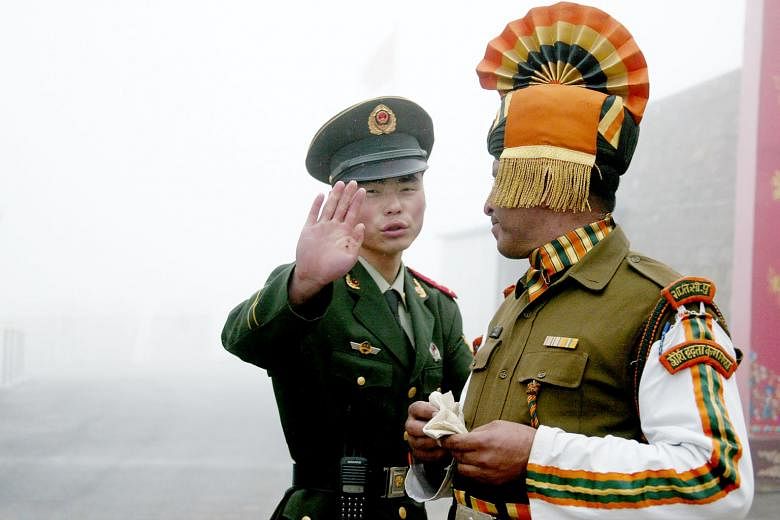War markers missing
Harsha Kakar
The Statesman, India
The recent stand-off at the Doklam plateau (has) resulted in China raising the war cry.
The Chinese foreign office mentioned that Chinese patience may run out and the situation could escalate into open conflict. The Indian Army chief had made a statement that India has the wherewithal to fight a 21/2-front war, implying an offensive war with Pakistan, a defensive war with China while controlling the militancy in Kashmir, all simultaneously.
It (war) is always a measure of last resort. Analysing the prevailing scenario would convey that while rhetoric is the order of the day, war is still miles away.
In the case of the Indo-China stand-off at Doklam, any escalation from the Chinese side, warmongering notwithstanding, would involve a buildup of war equipment, acclimatisation of soldiers considering the altitudes and movement of additional assets like airpower. While China may seek to keep operations localised, it would need to enhance deployment across the front to deny India an option of expanding the conflict.
This would imply Indian monitoring elements would observe increased Chinese movement and activities in the region. This has not been witnessed.

When China moved additional troops behind its soldiers deployed in the stand-off, India resorted to the same. Indian troops along the Chinese border may have become more vigilant and would have increased their patrols, but these would be in their own areas.
Thus, while India may be prepared, it has not resorted to any action signifying hostility. It has openly advocated diplomacy.
Diplomacy would provide the best solution, so long as doors to talks remain open.
India's misperceptions
An Gang
China Daily, China
Over a month ago, Indian troops crossed into China at the Sikkim section of the border between the two countries, instigating a stand-off with Chinese troops. This is arguably the biggest crisis facing the two countries since the 1962 border war.
The Sikkim section of the China-India boundary was delimited in 1890 with the Convention between Great Britain and China Relating to Sikkim and Tibet, and the boundary demarcation is recognised by both China and India.
However, India claims that a road being legitimately constructed by Chinese troops in Chinese territory has "serious" security implications for India. As a result, New Delhi decided to make a "pre-emptive" move.
Knowing the Chinese border troops will refrain from "firing the first bullet", Indian soldiers have employed such shady tricks in disputed areas. But this time, New Delhi has sent troops into China's Donglang area, which is not disputed, and which is nowhere near the trilateral junction that separates China, India and Bhutan. India has harboured the belief that Beijing would compromise due to the upcoming ninth Brics Summit in Xiamen, Fujian province.
So far, China has exercised restraint, but its patience will not last forever. China does not have any strategic ambition to manipulate South Asian or Indochinese Peninsula affairs, but that does not mean it will allow its territory to be encroached upon.
As China has repeatedly emphasised, although the diplomatic channels are unimpeded, the withdrawal of the Indian border troops who have illegally crossed into China's territory is the prerequisite for any meaningful dialogue between the two sides. Although the crisis is fundamentally an outcome of India's perception of its geopolitical role and worries about the rise of China, playing up the idea of an all-out geopolitical clash between the two countries is uncalled for...
The two countries should seek to reconcile their border issues and strive to maintain regional stability.
Bhutan should take the lead
Frank Ching
The China Post, Taiwan
The disputed Sino-Indian border, long a source of intermittent clashes, is once again the focus of a confrontation that sees Chinese and Indian troops facing off, this time in an area claimed by Bhutan.
Interestingly, China's territorial claim to the contested area rests on an 1890 treaty, the Convention between Great Britain and China Relating to Sikkim and Tibet. At the time, Sikkim was a British protectorate and India was a British colony. Today, Sikkim is part of an independent India. A lot of water has flowed under the bridge and yet China pins its claim on this relatively ancient treaty.
The latest conflict began after a PLA construction party entered the Doklam area and attempted to upgrade or extend a dirt road. An Indian account of the incident said: "It is our understanding that a Royal Bhutan Army patrol attempted to dissuade them from this unilateral activity." This was followed by the intervention of Indian troops, triggering a stand-off between Chinese and Indian troops, the first time on territory not claimed by India.
According to China, "the area where the construction activities are under way is totally under the jurisdiction of China because it is completely located on the Chinese side of the China-Bhutan customary line". On June 30, a Chinese foreign ministry spokesman asserted that "the boundary convention signed in 1890 explicitly stipulates that Mount Gipmochi is the junction of China, India and Bhutan, and Doklam is situated on the Chinese side of the China-India and China-Bhutan boundaries".
It is interesting that China should put so much emphasis on this 1890 treaty, especially since, on the same day, the foreign ministry referred to another treaty with Britain, the Sino-British Joint Declaration on Hong Kong, signed in 1984, as a "historical document that no longer has any realistic meaning".
So, on the one hand, a treaty that is meant to run at least until 2047 is already irrelevant, while one signed in 1890, when the world was very different, is still binding. China is picking carefully - and unilaterally - which treaties it considers relevant.
This is an excellent moment for the two countries to consult Bhutan on the tri-junction boundary point. Bhutan needs to act on its own behalf rather than relying on India. Other countries, very much including Britain, should speak up.
Once Bhutan decides to talk to China directly, the world will see this as a David versus Goliath situation, with puny Bhutan resisting a domineering neighbour used to getting its way. This is a better scenario than a face-off between two giants.
On the edge
Bunn Nagara
The Star, Malaysia
There are just two things wrong with the India-China face-off over Doklam in Bhutan - that it should happen at all, and that it has lasted for weeks on end and continues to fester.
India and China seemed to be serious about showing the developed West a thing or two. Then everything about that appeared to vanish. And all, it would seem, over a tiny bit of land in a third country: Bhutan.
And like all tried-and-tested issues between major powers, there is even more to it. But apparently the core issue is occupation and control, if not also ownership and sovereignty, over a speck of land believed to be of strategic value...
Nationalism and nationalist sentiment, however trite or trivial, seems so fashionable these days. So why should India or China be left out?Both sides remain adamant and implacable. They are still stiff and inflexible because there is something else each feels it has to safeguard besides its political legacy - face.
- The View From Asia is a compilation of articles from The Straits Times' media partner, Asia News Network, a grouping of 23 news media entities.

